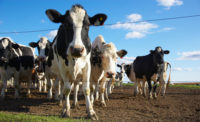It’s no secret that fruits and vegetables require proper refrigeration post-harvest. This is particularly true for hot climates. And, proper refrigeration requires reliable sources of power.
In the United States and many developed nations, landside cold chain infrastructures are readily available because of reliable power on the grid. However, this is not the case for developing nations such as India and most of sub-Sahara Africa, which if combined, has over 34% of the near 7 billion world population.
The Food and Agricultural Organization, Canada, estimates that about 40% of fruit and vegetable waste in sub-Sahara Africa is due to post-harvest losses, an estimated $4 billion of food loss, due to lack of cold storage infrastructures.
The absence of reliable power on the grid in India and sub-Sahara Africa means it relies heavily on fossil liquid fuels such as diesel to attain sensible power for agriculture and sustain cold value network logistics. Because this is not sustainable, a market-based solution for cold storage environments has not been feasible— until now, whereby innovations to adopt, adapt and integrate commercially proven technologies into distributed generation is beginning to hit the market. This approach takes out the guesswork and provides for a faster and more acceptable introduction of these new types of off-grid cold storage solutions into the market.
The concept of off-grid powering is not new by any means. Furthermore, distributed generation, which is small-scale production of power for end users, maintains the potential to grow from 2% in 2015 to 10% in the coming decades. Renewable sources and particularly solar will make up about 7% of this 10% total capacity, according to Bloomberg Energy, New York.
The integration of these sets of technologies coupled with smarter energy storage capabilities such as lithium ion storage opens the door to the development of cold storage value logistics for India and sub-Sahara Africa.
The business case and development strategies have taken on the path of how cell phone technologies and innovations leapfrogged the traditional landlines of old. If not for such leapfrogging of landlines, much of Africa would not have joined the internet global space.
Today, Africa is the fastest growing market for new mobile phone subscription, technology penetration and infrastructure deployments. The cold storage hubs are identical to base tower stations for cell phones. They will form the network of cold logistics making inter and intra trade.
Global market value for cold chain services that supports perishable foods distribution is estimated to be $250 billion, and the sector growth is fastest in emerging markets of India with a CAGR of 43%; it is estimated that sub-Sahara Africa is not far behind. Fueling this growth is the increasing access to global markets through demands for fruits and vegetables by consumers worldwide.
The challenge is this—the growth of warehouse capacity and access to cold chain logistics to support the expansive global demand for fruits and vegetables lags in the emerging markets. Consequently, there are plenty of opportunities for developers and manufacturers of off-grid powered cold storage units to introduce new solutions and expand sales through export.









